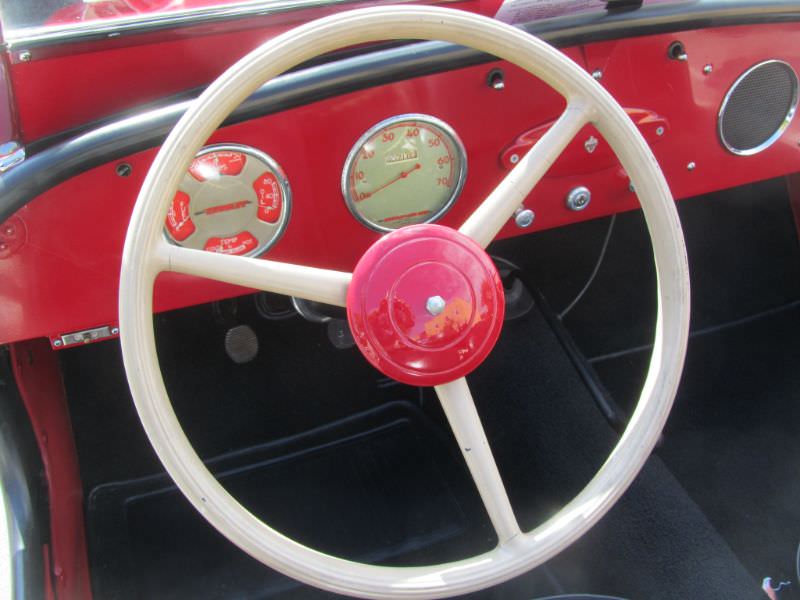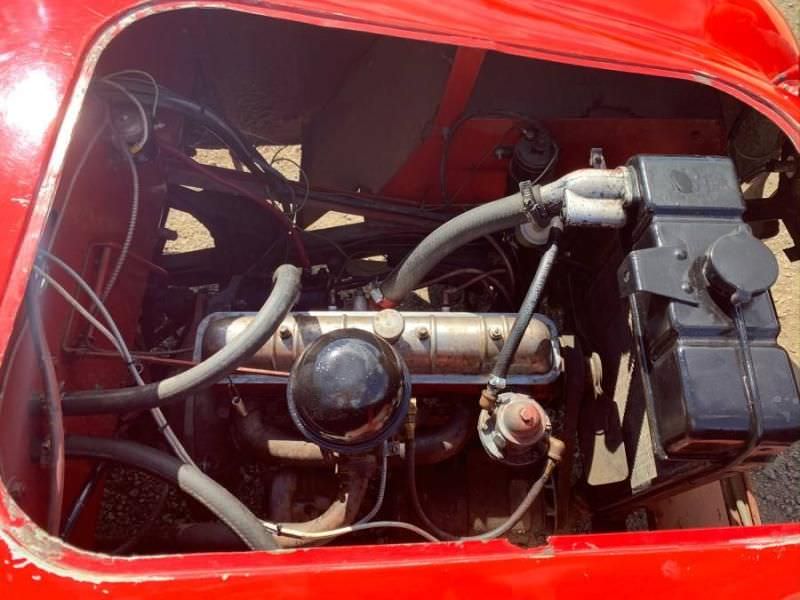With World War II in the rearview mirror, American soldiers stationed overseas came back with a newfound love for sporty open roadsters. Sensing a shift in consumer preference, the American automotive industry leapt into action. Among the trailblazers was none other than Powel Crosley Jr., renowned for the Crosley Radio Corp and Crosley Motor Inc., and owner of the Cincinnati Reds baseball team. Together with Crosley engineer Paul Klotsch, they birthed America’s first postwar sports car – the 1949 Crosley Hotshot.
The Hotshot was a unique departure from Crosley’s conventional minimalist vehicles. It was five inches longer, boasted an 85-inch wheelbase, and instead of opening doors, featured a drop-down in the side panels for access. However, in 1951 and 1952, full doors were introduced to the Super Sports variant, while the Hotshot retained its step-down sides complemented with removable half doors.
The heart of the Hotshot was its new CIBA (cast-iron block assembly) 44-cu.in., four-cylinder engine, which produced 26 horsepower. This high-revving CIBA engine replaced the COBRA (copper-brazed) engine used since 1946. Perhaps most appealing to potential buyers was the Hotshot’s affordable base price of just $849!
As a cutting-edge addition, the car adopted “Hydra-disc” brakes, inspired by spot disc brakes utilized in light aircraft, for enhanced stopping power. This innovative braking system was standard on all Crosley models in late 1949 and 1950. However, the Hydra-disc brakes’ alloy parts were prone to corrosion and locking up on salted, wintry roads, leading Crosley to switch to 9-inch Bendix hydraulic brakes of a more conventional design by mid-1950.
To circumvent trademark issues with England’s Crossley Motors, Crosley models destined for export were rebranded as Crosmobiles. They were identical to their domestic counterparts, save for the Crosmobile-badged hood, rear badges, and hubcaps. These vehicles found homes across Europe, South America, and Cuba, making them an incredibly rare sight in the United States today.















